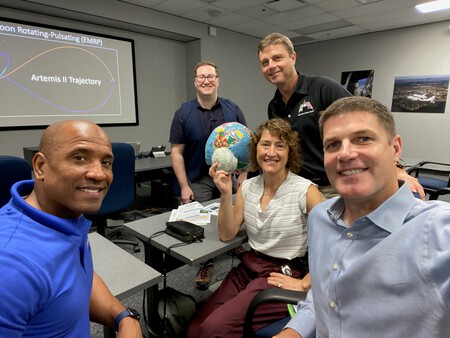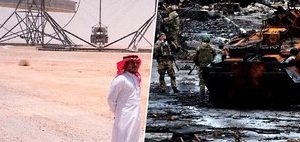After years of delays and cost overruns, the Artemis Program finally seems to be on track. In April of this year we saw the Block 1 configuration of the Space Launch System take off, the largest rocket ever built by NASA, as part of Artemis I. The test met expectations, so the US special agency and its partners are preparing for the next step.
Artemis II will be the first manned mission to the Moon. Although the astronauts will not descend to the surface of our natural satellite, they will enter its orbit aboard the Orion spacecraft and, after a series of activities, they will return to Earth. Now, as part of this objective, NASA has just undertaken a task in which it has experience, although it has not been put into practice for half a century.
The challenge of training the first Artemis astronauts
We’re talking about training the first Artemis astronauts. Christina Koch, Victor Glover, Reid Wiseman and Jeremy Hansen, a selection that we met just over three months ago, will be subjected for 18 months to a series of exhaustive tests for the first long-awaited manned mission to the Moon. It is that since 1972 no human being has returned to visit the satellite.
But that’s not all, these four people will become the first to go further than anyone in history, one step further than the distance reached by members of the Apollo missions. If everything goes as expected, let’s keep in mind that in special programs there can always be further delays, Artemis II should take off at the end of 2024.
The Artemis II crew at NASA facilities
Although, as we say, changes in the calendar may occur, the training of Artemis II It’s been running for weeks now.. The astronauts, although they have years of experience they will have to learn enough about Orion and SLS. Among their obligations we find tasks such as learning to operate and monitor the ascent and orbit systems, as well as the re-entry phases to Earth.

orion simulator

Neutral Buoyancy Laboratory
The first phase of the training program is taking place at the Johnson Space Center in Houston, where astronauts are receiving instructions on how to operate the spacecraft’s different systems. The crew will also learn how to pilot it manually and even address communication issues and how to respond to other potential emergency situations.

Related to the latter, since Orion will be landing over the ocean, the astronauts will also receive training related to water survival. Will also come into play Neutral Buoyancy Laboratory (NBL), a 12-meter-deep pool designed to simulate spacewalks in complex lighting scenarios.
Images: POT
In Xataka: We have detected “organic carbon molecules” on Mars. This is what it really means





![[Img #74131]](https://thelatestnews.world/wp-content/uploads/2024/10/They-discover-the-origin-of-most-meteorites-150x150.jpg)





![[Img #74131]](https://thelatestnews.world/wp-content/uploads/2024/10/They-discover-the-origin-of-most-meteorites-300x200.jpg)

